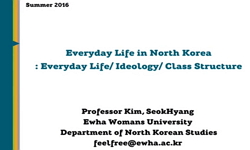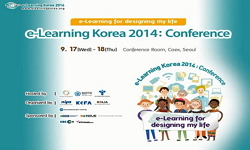Purpose: To identify the epidemiological characteristics and risk factors of coronavirus disease 19 (COVID-19) outbreaks depending on the type of educational facility by analyzing the COVID-19 cluster associated with educational facilities. Methods: T...
http://chineseinput.net/에서 pinyin(병음)방식으로 중국어를 변환할 수 있습니다.
변환된 중국어를 복사하여 사용하시면 됩니다.
- 中文 을 입력하시려면 zhongwen을 입력하시고 space를누르시면됩니다.
- 北京 을 입력하시려면 beijing을 입력하시고 space를 누르시면 됩니다.


Epidemiological Characteristic and Risk Factor of COVID-19 Cluster Related to Educational Facilities in Gangwon-do, Korea (December 20, 2020–September 23, 2021)
한글로보기https://www.riss.kr/link?id=A109044506
-
저자
Choi Hyosug (Division of Infectious Disease Response, Capital Regional Center for Disease Control and Prevention, Korea Disease Control and Prevention Agency, Seoul, the Republic of Korea.) ; Kim Mi Young (Division of Infectious Disease Response, Capital Regional Center for Disease Control and Prevention, Korea Disease Control and Prevention Agency, Seoul, the Republic of Korea.) ; Lee Shinyoung (Division of Infectious Disease Response, Capital Regional Center for Disease Control and Prevention, Korea Disease Control and Prevention Agency, Seoul, the Republic of Korea.) ; Kim Eunmi (Gangwon Center for infectious Disease, Chuncheon, the Republic of Korea.) ; Kim Yeo Jin (Gangwon Center for infectious Disease, Chuncheon, the Republic of Korea.)
- 발행기관
- 학술지명
- 권호사항
-
발행연도
2024
-
작성언어
Korean
- 주제어
-
등재정보
KCI등재,SCOPUS
-
자료형태
학술저널
-
수록면
102-112(11쪽)
- DOI식별코드
- 제공처
-
0
상세조회 -
0
다운로드
부가정보
다국어 초록 (Multilingual Abstract)
Methods: This study is based on epidemiological investigation of COVID-19 cluster in Gangwon-do, Korea from December 10, 2020 to September 23, 2021 reported to the Korea Disease Control and Prevention Agency’s Integrated Disease and Health Management System. Four hundred seven patients in 19 facilities, classified as cluster related to educational facilities, were the study population. The result of preliminary epidemiology survey report, in-depth epidemiological survey by phone and the result of risk assessment derived from the field epidemiology investigation were retrospectively analyzed to evaluate infectivity and the characteristics of the risk factors.
Results: There were total of 407 confirmed patients related to 19 educational facilities, with 204 students under the age of 19 (50.1%). One hundred fifty-five preceding spreaders were from families (38.1%) and 125 were the teachers (30.7%). The place exposed to confirmed patients was the highest with 139 people (34.2%) at home.
Conclusions: It was confirmed that the cause of the occurrence of clusters related to educational facilities was higher due to family transmission than the risk of facilities in schools. Nevertheless, continuous efforts should be made to control infection in educational facilities, and that teachers’ implementation of principles for prevention of COVID-19 personal hygiene in their daily lives should be strengthened.
Purpose: To identify the epidemiological characteristics and risk factors of coronavirus disease 19 (COVID-19) outbreaks depending on the type of educational facility by analyzing the COVID-19 cluster associated with educational facilities.
Methods: This study is based on epidemiological investigation of COVID-19 cluster in Gangwon-do, Korea from December 10, 2020 to September 23, 2021 reported to the Korea Disease Control and Prevention Agency’s Integrated Disease and Health Management System. Four hundred seven patients in 19 facilities, classified as cluster related to educational facilities, were the study population. The result of preliminary epidemiology survey report, in-depth epidemiological survey by phone and the result of risk assessment derived from the field epidemiology investigation were retrospectively analyzed to evaluate infectivity and the characteristics of the risk factors.
Results: There were total of 407 confirmed patients related to 19 educational facilities, with 204 students under the age of 19 (50.1%). One hundred fifty-five preceding spreaders were from families (38.1%) and 125 were the teachers (30.7%). The place exposed to confirmed patients was the highest with 139 people (34.2%) at home.
Conclusions: It was confirmed that the cause of the occurrence of clusters related to educational facilities was higher due to family transmission than the risk of facilities in schools. Nevertheless, continuous efforts should be made to control infection in educational facilities, and that teachers’ implementation of principles for prevention of COVID-19 personal hygiene in their daily lives should be strengthened.
동일학술지(권/호) 다른 논문
-
Septic Arthritis of the Manubriosternal Joint in an Adolescent: A Case Report
- 대한소아감염학회
- Park Soongang
- 2024
- KCI등재,SCOPUS
-
Effectiveness of Two-dose Varicella Vaccination: Bayesian Network Meta-analysis
- 대한소아감염학회
- Hong Kwan
- 2024
- KCI등재,SCOPUS
-
Febrile Seizure Associated With COVID-19 in a Child: Case Report and Literature Review
- 대한소아감염학회
- Jo Yu Ri
- 2024
- KCI등재,SCOPUS
-
- 대한소아감염학회
- Kang Han Byeol
- 2024
- KCI등재,SCOPUS




 ScienceON
ScienceON KISS
KISS





